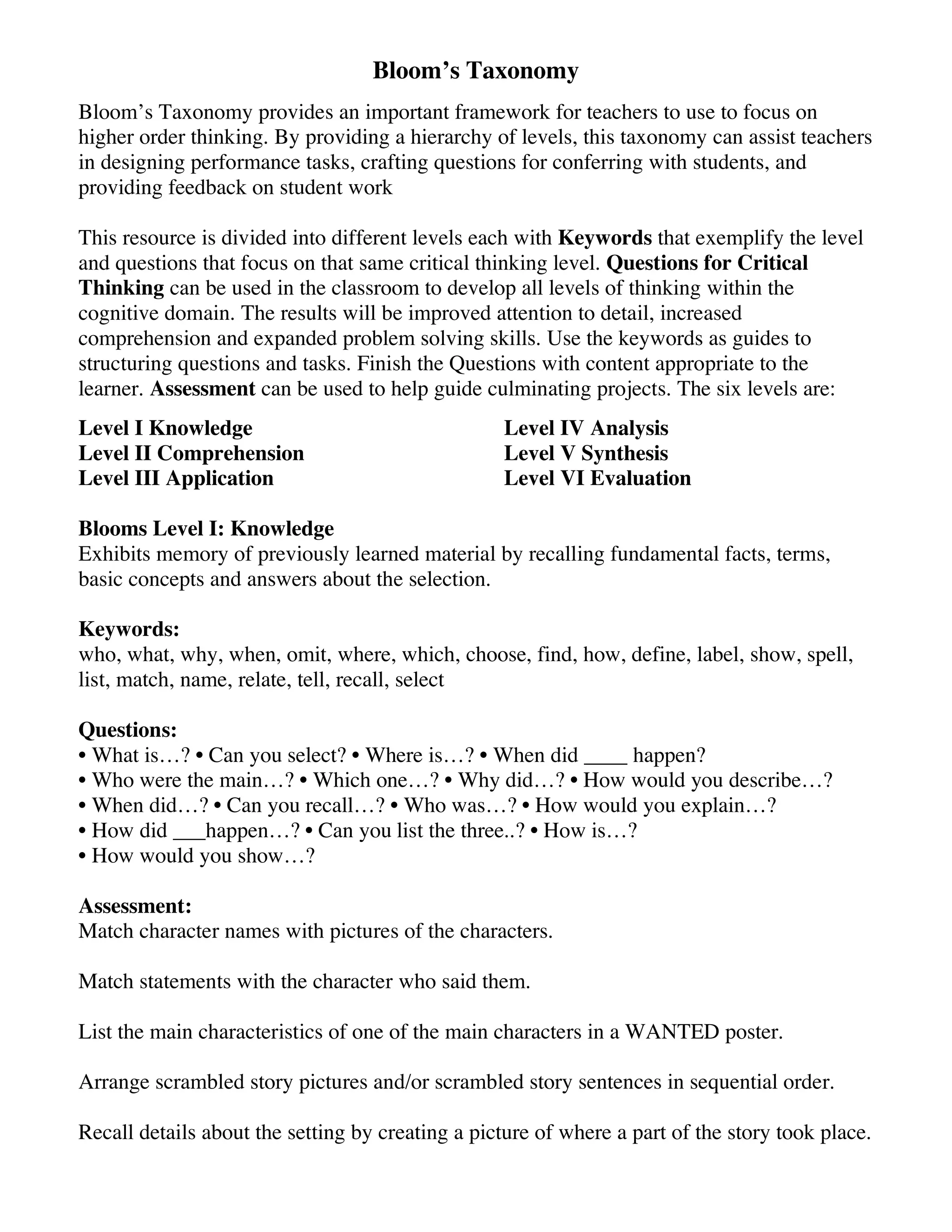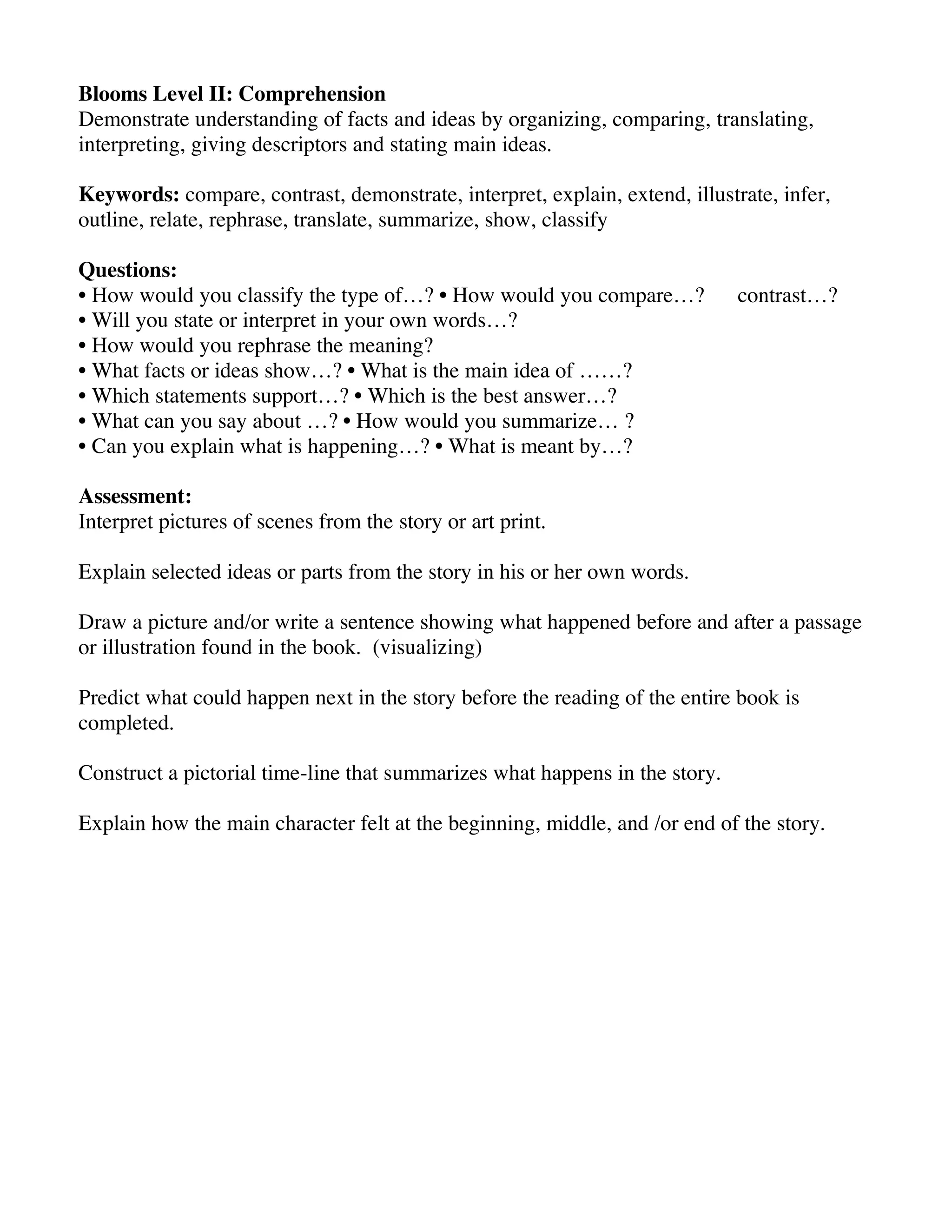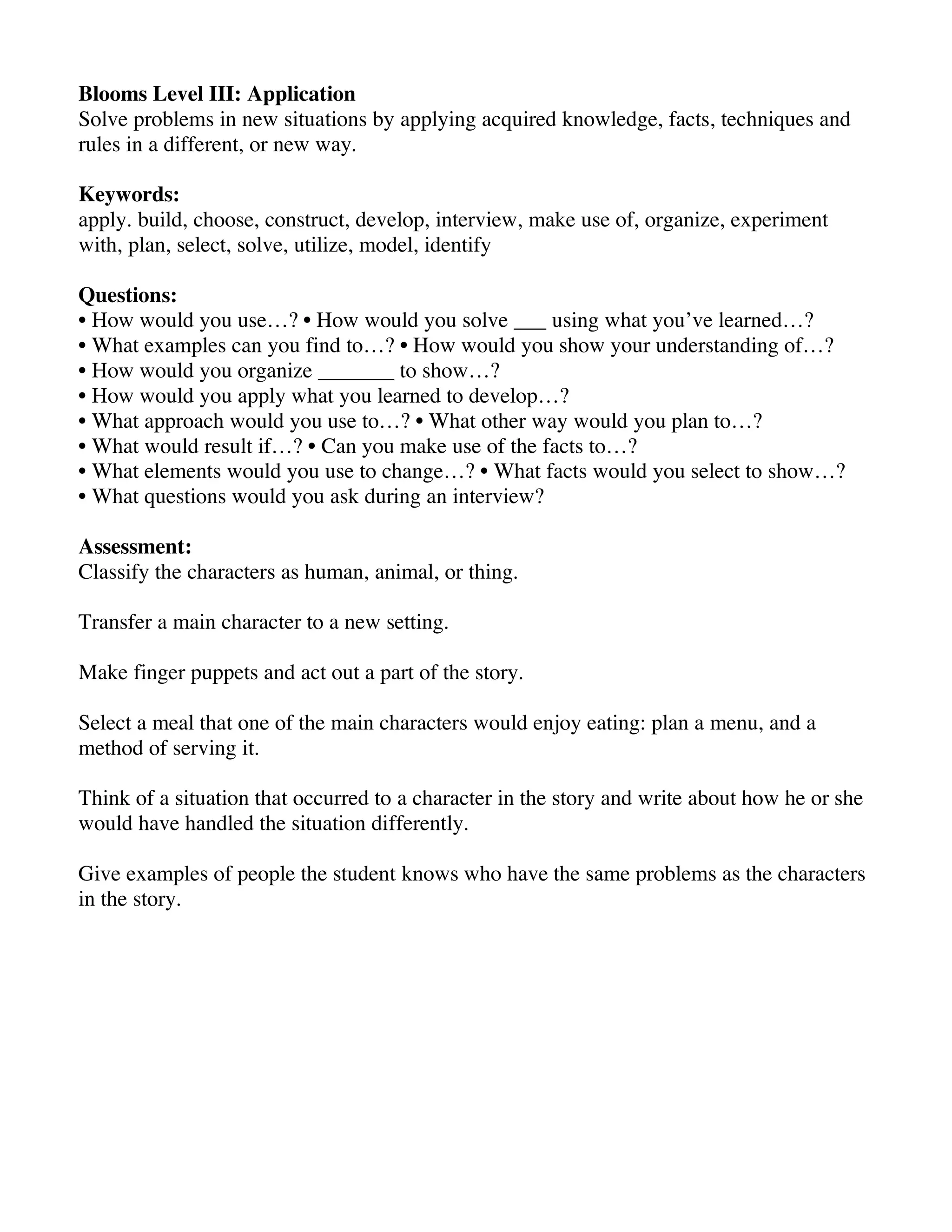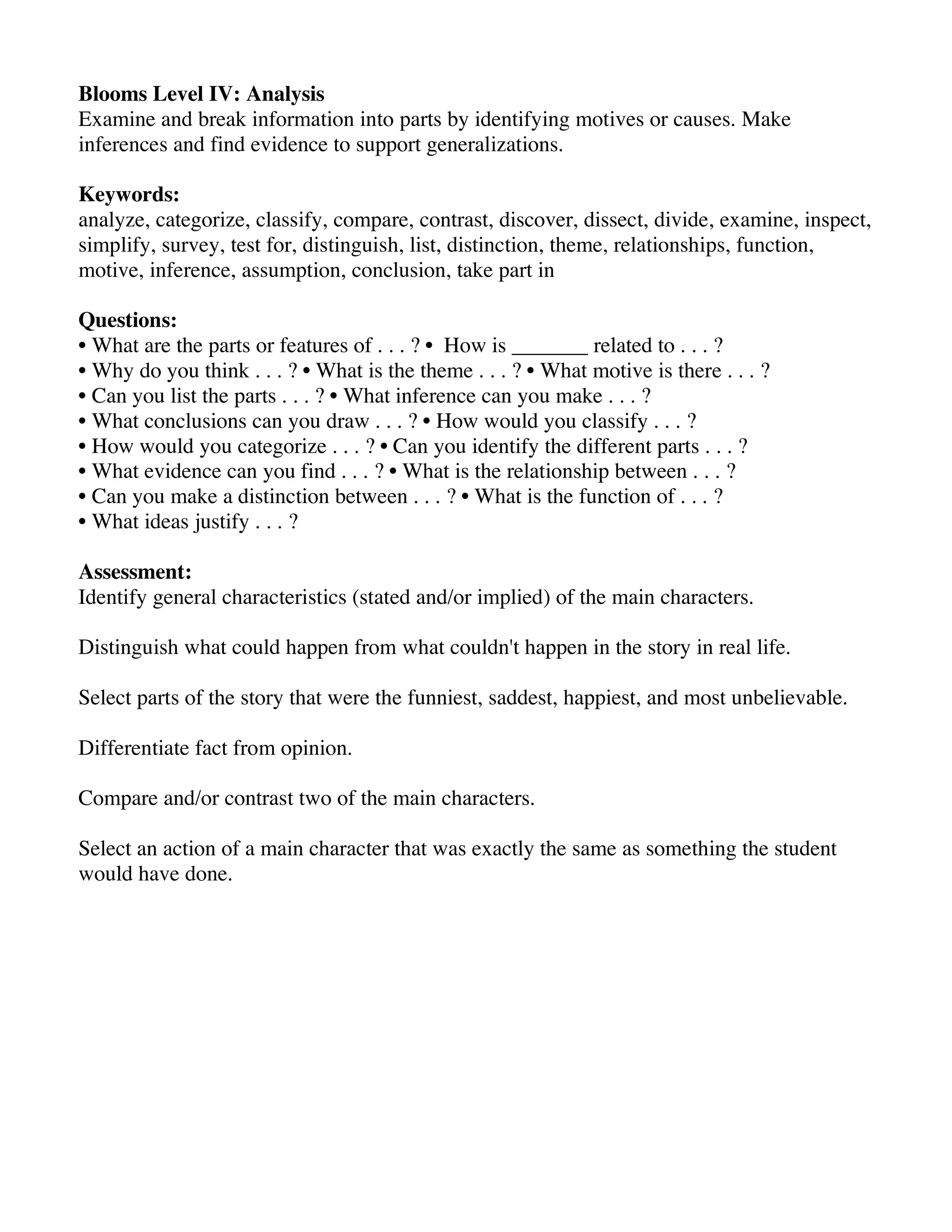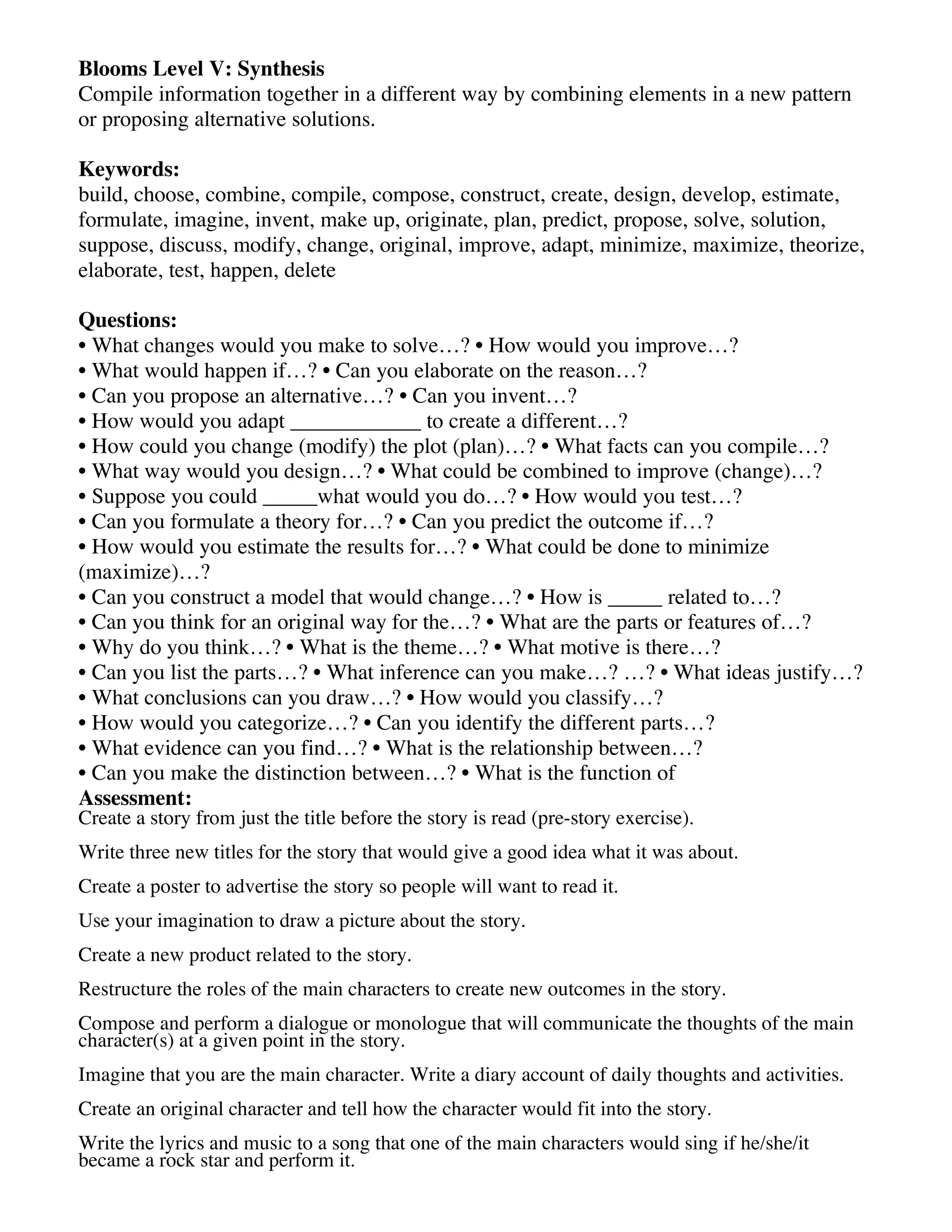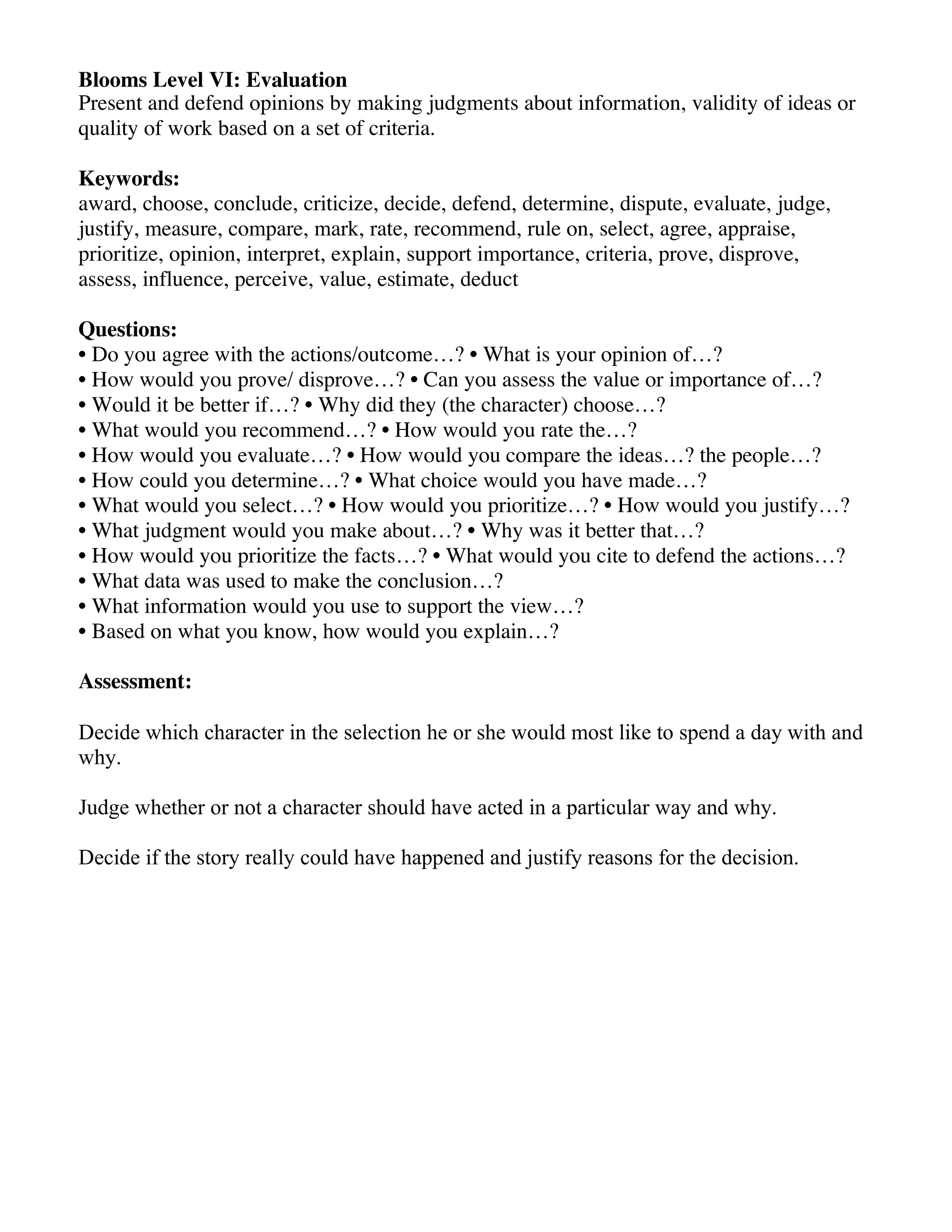Bloom's Taxonomy provides a framework for classifying levels of thinking skills, from lower order to higher order. It includes six levels: Knowledge, Comprehension, Application, Analysis, Synthesis, and Evaluation. Each level has key verbs to guide question and activity design to develop critical thinking skills and engage students at that cognitive level. Teachers can use Bloom's Taxonomy to help craft effective questions, design performance tasks, and provide feedback to students.
